![]()
![]()
![]()
Use LEFT and RIGHT arrow keys to navigate between flashcards;
Use UP and DOWN arrow keys to flip the card;
H to show hint;
A reads text to speech;
61 Cards in this Set
- Front
- Back
|
Long bone contains what |
Yellow bone marrow which is mostly fat |
|
|
Kids long bones contain what |
Red bone marrow |
|
|
Sites of attachment are |
Tendons and ligaments |
|
|
Depressions or cavities |
Are indention |
|
|
Osteon |
Haverism system |
|
|
The tailbone is what |
Coccyx |
|
|
Canaliculi i |
Tiny canals radiate from the central canal to Lucunae |
|
|
In embryos the skeleton is primarily dur |
Hyaline cartilage |
|
|
During development cartilage is replaced |
By bone |
|
|
Cartilage remains where |
In isolated areas |
|
|
Cartilage is found in the |
Bridge of the nose |
|
|
Parts Of the ribs have |
Cartilage |
|
|
Bone growth is |
Ossification |
|
|
Epiphyseal plate allows for lengthwise growth of what |
Long bones in childhood development |
|
|
New cartilage is |
Continually formed |
|
|
Old cartilage |
Becomes ossified |
|
|
Osteocytes o |
Mature bone cells |
|
|
Osteoblasts |
Bone forming cells |
|
|
Osteoclasts |
Bone destroying cells |
|
|
Closed(simple) |
Bone does not break out of the skin |
|
|
Open(compound) |
Bone breaks through the skin |
|
|
Surfaces features for bones are |
Sites of attachment for muscle tendons and ligaments |
|
|
Passage for nerve and blood vessels |
On bone |
|
|
Features of bone |
Projections of process grow out form bone |
|
|
Lacunae |
Cavities containing bone |
|
|
Canaliculi |
Tiny canals radiate from central lucanae |
|
|
Functions of bone |
Support the body |
|
|
Protect organs |
Allow movement |
|
|
Store minerals and fat |
Blood cell formation |
|
|
The adult skeleton has how many bones |
206 bones |
|
|
Basic bone tissue |
Compact bone spongy bone |
|
|
Compact |
Homogeneous |
|
|
Spongy bone |
Many spaces small needle like pieces of bone |
|
|
Long bones are typically |
Longer and wider |
|
|
Long bones |
Have a shaft with heads on both End |
|
|
Long bones contain mostly |
Compact bone |
|
|
Examples of long bone |
Femur humerus |
|
|
Short bones |
Are generally cube shaped |
|
|
Short bone |
Contain mostly spongy bone |
|
|
Flat bone |
Two thin layer of flat bone usually curved |
|
|
Ex of flat bones |
Skull robs sternum |
|
|
Irregular bone |
Irregular shape |
|
|
Ex of irregular bone |
Vertebrae hip bones |
|
|
Diaphysis |
Shaft composed of compact bone |
|
|
Epiphysis |
Ends of bone |
|
|
Periosteumsha |
Outside covering of the diaphysis |
|
|
Sharpey fibers ar |
Secure periosteum to underlying bone |
|
|
Arteries |
Supply bone cell with nutrients |
|
|
Articular cartilage |
Cover the external surface of the epiphysis |
|
|
Medullary cavity |
Cavity inside the shaft |
|
|
Periosteumsha |
Outside covering of the diaphysis |
|
|
Sharpey fibers ar |
Secure periosteum to underlying bone |
|
|
Arteries |
Supply bone cell with nutrients |
|
|
Articular cartilage |
Cover the external surface of the epiphysis |
|
|
Medullary cavity |
Cavity inside the shaft |
|

Front (Term) |

Back (Definition) |
|
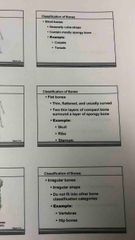
Front (Term) |
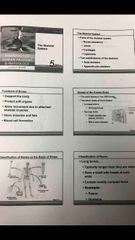
Back (Definition) |
|
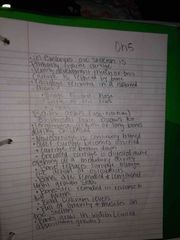
Front (Term) |
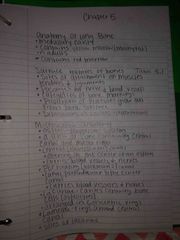
Back (Definition) |
|
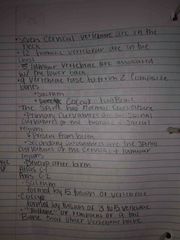
Front (Term) |
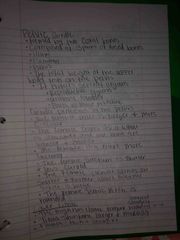
Back (Definition) |
|
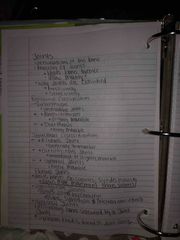
Front (Term) |
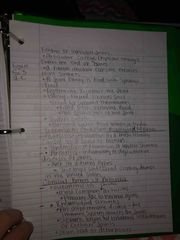
Back (Definition) |
|
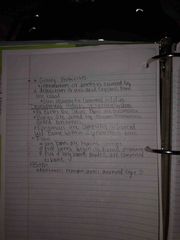
Front (Term) |
Back (Definition) |

